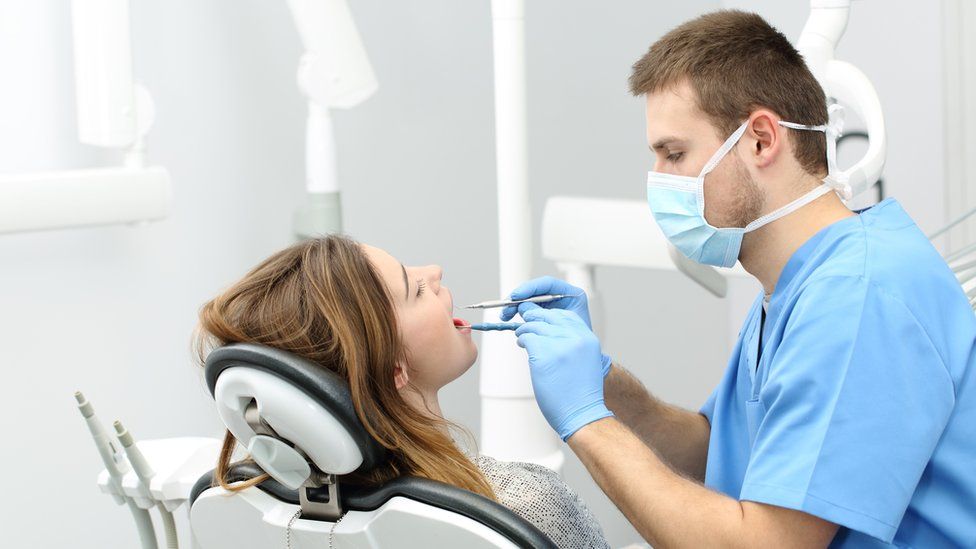
DenRoboTrack
Your path to a flawless smile

Dental and Jaw Health Precision: Solutions for Every Smile
Introduction:
Precision in dental and jaw health is paramount for achieving optimal oral well-being. As technology continues to advance, dental professionals are equipped with innovative solutions that cater to the unique needs of each patient’s smile. “Dental and Jaw Health Precision: Solutions for Every Smile” explores the cutting-edge technologies and personalized approaches shaping the future of dental care, ensuring that every individual receives tailored and precise treatment for their oral health.
Digital Imaging and Diagnostics:
The foundation of precision dentistry lies in accurate diagnostics, and digital imaging technologies have revolutionized this aspect of dental care. Traditional X-rays have given way to digital radiography, intraoral scanners, and cone-beam computed tomography (CBCT). These advanced imaging tools provide detailed, three-dimensional views of the teeth and jaw, allowing dental professionals to diagnose conditions with unparalleled precision. The shift to digital imaging not only enhances diagnostic accuracy but also minimizes radiation exposure, prioritizing patient safety.
Computer-Aided Design and Manufacturing (CAD/CAM) Systems:
The integration of CAD/CAM systems has ushered in a new era of precision in restorative dentistry. These systems enable the creation of digital impressions and the design and manufacturing of dental restorations with utmost accuracy. Whether it’s crowns, veneers, or bridges, CAD/CAM technology ensures that each restoration is tailored to the unique anatomy of the patient’s teeth. The chairside milling process allows for the creation of high-quality restorations in a single visit, providing an efficient and precise solution for patients.
Laser Dentistry:
Laser technology has emerged as a precise and versatile tool in various dental procedures. From soft tissue surgeries to cavity preparation and teeth whitening, lasers offer a level of precision that traditional methods may struggle to achieve. Laser dentistry minimizes damage to surrounding tissues, reduces discomfort for patients, and allows for finer control during procedures. The precision afforded by lasers enhances the overall effectiveness of dental treatments.
Orthodontic Precision with 3D Oral Scanning:
Orthodontic treatments require meticulous planning and execution, and 3D oral scanning has become a game-changer in this field. Traditional molds and impressions have been replaced by digital scanning, providing orthodontists with detailed and accurate images of the patient’s dentition. This level of precision is crucial for the planning and implementation of orthodontic interventions, such as braces or aligners. 3D oral scanning not only improves the precision of treatment but also enhances the overall patient experience.
Artificial Intelligence (AI) in Treatment Planning:
The advent of Artificial Intelligence has introduced a new dimension to treatment planning, offering personalized and data-driven approaches. AI algorithms can analyze vast datasets to assist dental professionals in diagnosing conditions, predicting treatment outcomes, and planning complex procedures. This level of precision ensures that treatment plans are tailored to the specific needs of each patient, optimizing results and minimizing uncertainties.
Biometric Profiling for Accurate Patient Identification:
Biometric profiling, including fingerprint technology, has found its way into dental practices for accurate patient identification. This ensures that the right treatment plans and records are associated with each patient, reducing the risk of errors and enhancing overall precision in patient care. Biometric profiling not only streamlines administrative processes but also contributes to the security and accuracy of patient information.
Teeth Gap Precision with Innovative Monitoring Devices:
Monitoring the progress of orthodontic treatments requires precision, and innovative monitoring devices, such as the DenRoboTrack, are addressing this need. These devices utilize advanced technology to measure and document teeth gap changes during orthodontic treatment. The precision offered by these devices not only aids in treatment planning but also allows for real-time adjustments, ensuring that each patient’s journey towards a straighter smile is as precise as possible.
Patient-Centric Care through Education and Communication:
Precision in dental care extends beyond technology to patient-centric approaches. Effective communication and patient education are vital components of ensuring that individuals actively participate in their oral health journey. Dental professionals who take the time to educate patients about their treatment options, preventive measures, and overall oral health empower them to make informed decisions, contributing to the precision and success of their care.
Conclusion:
“Dental and Jaw Health Precision: Solutions for Every Smile” encapsulates the transformative impact of technology and personalized approaches on the precision of dental care. From advanced imaging and CAD/CAM systems to laser dentistry, biometric profiling, and innovative monitoring devices, each innovation contributes to the precision, efficiency, and personalization of dental treatments. As the dental landscape continues to evolve, the commitment to providing tailored and precise solutions ensures that every smile receives the care it deserves, setting the stage for a future where oral health is synonymous with precision and excellence.